-
5 Reasons Your Garage Door Won’t Close
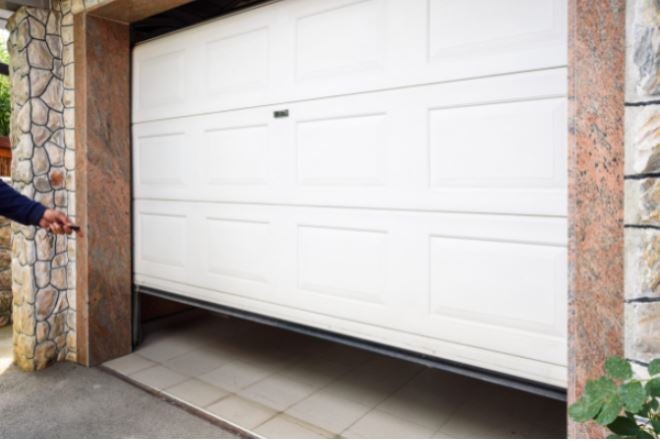
You leave your home and use your remote to close your garage door, only to see that your garage door refuses to close. While it’s frustrating when a broken garage door doesn’t work correctly, there are a few things that can impact its functionality. When you’re dealing with a major issue, it’s important to hire a garage door professional to fix the problem so that your garage door doesn’t incur additional damage.
Check out these five common reasons that your garage door won’t close:
- You Have an Issue with Your Garage Door’s Sensors
Your garage door’s sensors prevent your door from closing on a vehicle or other obstruction. If your garage door refuses to close all the way, you might have an issue with the sensors.
Try wiping the sensors with a soft cloth to remove dirt and dust that can keep them from functioning correctly. If you observe that a sensor is blinking, it might need to be realigned. This is done by loosening the sensor and adjusting it until the light no longer blinks.
- Your Tracks or Rollers Are Damaged
Damaged tracks and rollers are another frequent reason that a garage door won’t go past a certain point. If you spot components that are bent, a garage door repair professional can bend them back into place or replace them.
- Your Trolley Isn’t Activating
The component that attaches from your garage door to the opening mechanism is the trolley. If your garage door isn’t moving at all when you try to close it, the trolley may need to be reactivated.
- Your Door’s Limit Screw Needs To Be Adjusted
Your garage door’s limit screws are located on your garage door opener and tell it how far to open or close. If they’re too high up, adjust them downward with a screwdriver so that your garage door can fully close.
- Your Garage Door Remote Has a Problem
Sometimes, the issue is with your garage door remote, not your garage door. Replace the batteries in your remote and confirm that it’s connected to your garage door. If it still isn’t opening, you may need to call a local garage door company for repairs.
Request a Service Call for Your Garage Door
Contact Thomas V. Giel Garage Doors, Inc. online or by calling 724-443-1437 to schedule a service call for your garage door
-
How To Choose the Right Garage Door for Your Home
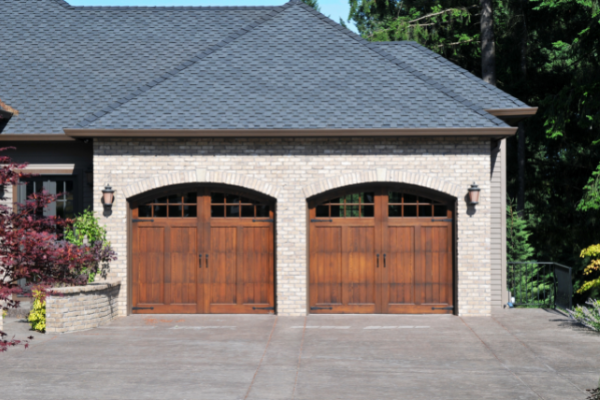
A garage door is an important functional item for your home’s exterior, providing you access to your garage while significantly impacting your home’s overall appearance. Here are a few things that will help you choose the right garage door.
The Material of the New Garage Door
The material for your new garage door affects its appearance, functionality, and durability. Some materials also require more upkeep to keep them looking their best.
A natural wood garage door is lovely, but it needs frequent refinishing. Composite is a more durable alternative that combines the appearance of wood with durability and longevity. Steel is a popular garage door material for many homeowners, thanks to its sleek look, multiple design options, and strong durability. Know that if you live on the coast, you’ll have to regularly wax your steel garage door to keep it from rusting.
The Garage Door’s Design and Style
Your garage’s door design and style should complement the architectural style and exterior details of your home.
For example, if your home has modern or Spanish-style architecture, a garage door with a barn door design will look out of place. However, if your home has a farmhouse or traditional architecture, a barn door-style garage door will complement its exterior appearance. Not sure which garage door will suit your home? Try out this tool to design and build your garage door.
The Specifications for Your Garage Door
You’ll want a garage door with specifications that can withstand your climate and weather conditions. If high winds are a frequent concern, you’ll need a garage door with a minimum level of wind resistance. Want to keep your garage at a more comfortable temperature and make your entire home more energy efficient? An insulated garage door will assist you with these goals.
Your Budget for Your New Garage Door
A gorgeous garage door with all the bells and whistles is of little use if it’s too expensive for your budget. Before you start shopping with a garage door company, decide how much you are wanting to spend and what features are most important to you.
Buy Your New Garage Door
Ready to explore potential garage door designs? Visit the Thomas V. Giel Garage Doors, Inc. website to get started!
-
6 Garage Door Accessories You Need
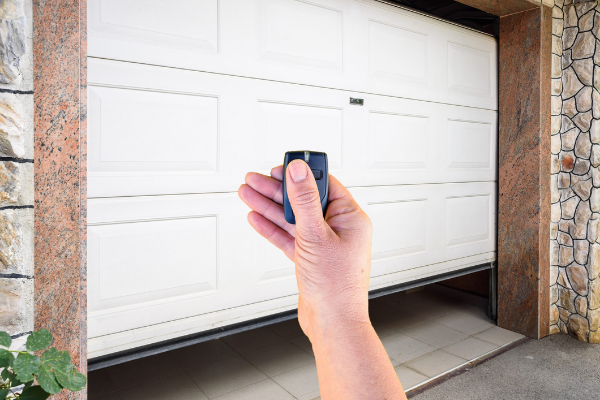
Just when we thought our garage door systems couldn’t get any safer, any more automated, or any more sophisticated, leave it to the technology companies to prove us wrong. As every industry advances, the same is true of garage door accessories. Wireless technology is improving our safety and control of our garage door systems in unbelievable ways.
Depending on the model of garage door opener your home has, these are some of the must-have accessories that will streamline your life as never before.
- Exterior wireless keypad – If you can’t find your controller, you can enter the four-digit code into the keypad to open the garage door from the outside instead of going inside the house.
- Garage door monitor – If you’ve ever gone to bed and wondered if you forgot to close the garage door, your worries are over. This monitor can tell you the door’s status and allow you to close it from any location inside your house.
- Laser parking system – This system provides a guide so that you park your car in the perfect spot every time.
- Internet gateway – Using a Wi-Fi connection, you will be able to open and close your door from any location in the world. This comes in handy if you aren’t home and you need to let a delivery person or a repair technician have access to your garage or home. You can also use it to be certain that the door is closed when it should be.
- Battery backup system – This will allow you to use your garage door opener even if there is a power outage.
- Mini remote control – This garage door opener is small enough to carry in a pocket or a purse so you can always keep it with you when you are away from home.
Thomas V. Giel Garage Doors, Inc., is your premiere garage door company for all the latest garage door opener accessories. We employ only licensed, experienced, and highly trained garage door technicians to install the accessories you need to make your life easier. Visit our website or contact us today to learn more or to schedule an appointment.
-
How to Choose the Right Garage Door Company
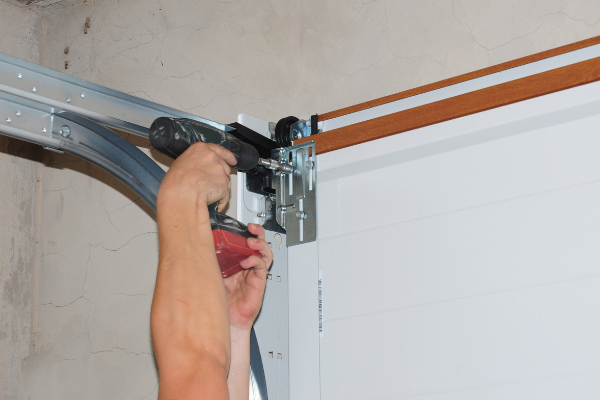
Garage door problems and failures naturally occur over time, but they should not happen right after you’ve had a new garage door installed. Your garage door should last anywhere from 20 to 30 years with proper care. Issues with the operation of your new garage door indicate that you have chosen the wrong garage door company.
Your garage door was not installed correctly if any of these issues are occuring:
- Damaged springs resulting from poor quality or negligent handling
- Noises like rattling or squeaking due to misalignment or damage done at the time of installation
- The door doesn’t open or close or these operations are delayed.
Like any other industry, garage door companies have been infiltrated by scammers. They are often transitory and downright suspicious when you know what to look for. These are good indications of a scam garage door company:
- The company is new, meaning that it has no history in the community or the surrounding area
- The name is generic and gives no indication of who the owners might be
- There is no physical or permanent address or reliable contact information
- The prices are ridiculously low
- The vehicles and work attire are not professional or do not display the name of the company, or worse, display the wrong company name,
- You can’t trace the history of the company through the BBB or other online sources
- There are no reviews or the reviews sound generic and are not from local residents,
- There is no website or if there is, it is vague and provides no assurance or credibility
- The advertising is excessive or even intrusive.
A reputable local garage door business will present itself entirely differently. The owners and employees will want you to be able to contact them and ask questions. They will provide transparency as to their business practices and examples of past work to assure customers that they are making the right choice.
When you have found the right garage door company, the answers to all of these questions should be yes:
- Do they carry insurance?
- Do they guarantee their work and offer warranties on products?
- Are their technicians experienced and have the proper qualifications?
- Do they have good online reviews and positive feedback from friends, neighbors, and previous customers?
- Do they provide estimates and disclose costs upfront?
- Are they professional, friendly, and honest?
Thomas V. Giel Garage Doors, Inc. can answer all these questions to prove that they are the right garage door company for all of your garage and entry door needs. Contact us or visit our website today to learn more or to schedule an appointment.
-
Should I Repair or Replace My Garage Door?
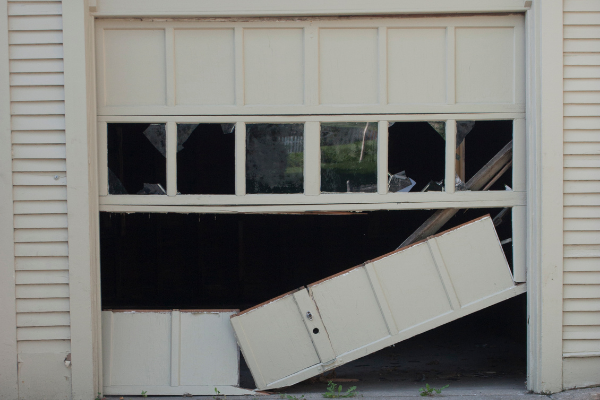
For most people, the largest investment they will make during their lives is the purchase of a home. It can be difficult to know when putting money into the place will produce a high enough return on the investment to be worth it. Garage doors fall into that category. If you are trying to decide if you want to replace your door or if repairs would be sufficient, keep reading for some information that might help you find your way.
These are some indications that your garage door only needs to be repaired:
- It is making noises – A garage door shouldn’t be overly noisy. Rattling or other noises could be signs of loose hinges or torsion springs, which can be replaced.
- The safety sensors aren’t working properly – If they are blocked or damaged, the door may not open and close properly.
- The door is off balance or out of square – A weakened motor or worn cables can cause the door to close unevenly.
- There is only one damaged panel – One panel can be replaced without the need to replace the entire door.
- The problem just started or has only occurred a few times – New problems are worth looking into and could be easy to fix.
Sometimes a little garage door maintenance can go a long way toward resolving an issue that could grow worse over time.
More serious issues can be used to determine that a new garage door is needed including:
- You consistently have to pay to make repairs to the door.
- The door hasn’t worked correctly for a long time.
- There are no safety sensors.
- The door is heavily damaged.
- It no longer matches or complements the exterior of your home.
- It has been broken into or could be easily.
With a return on investment of over 90 percent, investing in a new garage door is always a smart decision, but you may have other financial considerations or reasons for not wanting to replace your entire garage door system. If you aren’t sure what to do, there are some factors that you can evaluate that might be helpful.
- How old is the garage door?
- How much repair does it need?
- What is the garage door’s overall condition?
- Is the garage door opener still in good condition?
- Is the garage door safe to use?
- How much money can be devoted to it right now?
- Is repair or replacement more cost effective?
Making decisions about garage door repair isn’t always easy, but you don’t have to make them alone. The garage door specialists at Thomas V. Giel Garage Doors, Inc., are qualified to help you evaluate your current garage door and make the best recommendation for your budget and style of home. Contact us for more information.
-
The Importance of Properly Maintaining Commercial Garage Doors
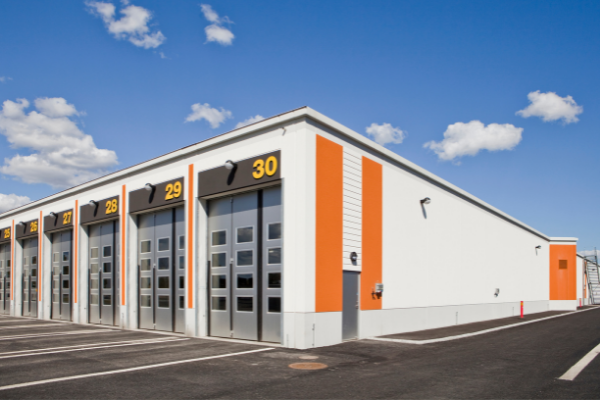
Commercial garage doors are designed specifically to offer maximum security. Commonly made with steel, they are sturdier, stronger, and more secure than residential garage doors. Your commercial garage doors protect not only your property but also your livelihood. Your business couldn’t operate without some kind of commercial door whether it’s high speed or aluminum garage doors, rolling security gates, rolling steel garage doors, or man doors. Keeping them in safe working order protects you, your business, and your customers.
Commercial garage doors can experience problems and even create safety hazards when they are not taken care of properly. These are some common problems that commercial garage doors experience:
- Damaged or Broken Tracks – Gaps between the rollers and the tracks keep the door from operating evenly and closing completely.
- Electrical Issues – Failure of the door to open or close could be a problem with the power supply.
- Cable and Spring Damage – If torsion springs break, you won’t be able to open the door from a closed position and if it is open at the time, the door could fall dangerously.
- Damaged Panels – A damaged panel could pose a security risk.
- Wear and Tear on the Rollers – The rollers can experience heavy wear or if they aren’t regularly cleaned, it can be hard for them to operate smoothly.
Addressing these issues early through the use of a preventative maintenance program is key. Keeping your commercial garage doors in good working order is essential to:
- Keep Your Business Open – Unexpected closures drive customers away.
- Save Money – Fixing small problems before they lead to bigger ones can save you money.
- Protect You from Liability – A broken or malfunctioning door can be a danger to customers and employees.
- Protect Your Business – Make sure your business is protected against theft, burglary, or other crimes.
The biggest reason for performing commercial door maintenance is your peace of mind. The assurance that your property, employees, and customers are safe goes a long way toward making your business successful for the future. Thomas V. Giel Garage Doors, Inc., offers a commercial garage door maintenance program that can help you find and fix problems before they progress. Contact us today to schedule an appointment.
-
Does My Home Insurance Cover My Garage?
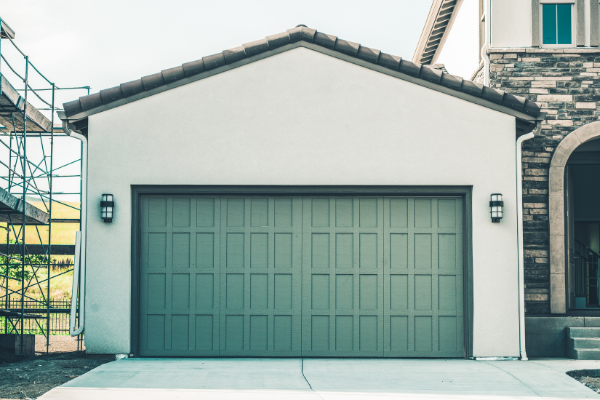
Insurance companies can be pretty good at throwing us curve balls. Just when we think something is covered, it might not be either because of a contingency or a point of coverage we didn’t know we needed. One example of this is our garages. It’s common to believe that our attached garages and their contents are covered by our homeowner’s insurance and for the most part, that’s true, but there are some exceptions that you should know about.
Your attached garage is covered by your insurance because it is considered to be an actual part of your home. Your insurance will pay for the damaged structure and contents, but from here on out it gets a little trickier. If you are planning to keep very valuable items such as an antique car in your attached garage, you should talk to your insurance agent about making certain that your policy is large enough to recover those costs if damage or theft should occur. Detached garages are another issue. They are usually only insured for one-tenth of the value of your home so if you will be keeping valuable or irreplaceable items in a detached garage, you should definitely contact your insurance agent for a better policy.
You will also need to contact your insurance agent if you are running a business out of an attached or detached garage. Your business will not be covered by a traditional homeowner’s policy and will likely need separate coverage.
Whether your garage is attached or detached, the following kinds of damage are covered by most homeowners’ policies:
- Burglary, theft, or vandalism
- Damage from falling objects like trees
- Lightning and fire
- Smoke damage
- Structural damage from the weight of ice or snow
- Damage from hail and windstorms.
There is also a list of things that most homeowners insurance policies won’t cover that includes:
- Some types of water damage
- Maintenance or wear and tear issues
- Equipment or mechanical breakdowns
- Power surges
- Rodent or pest infestations
- Damage from floods
- Damage from earthquakes or other uncontrollable earthly movements.
Insurance won’t pay for things like power surges that were caused by power companies, certain natural disasters without separate coverage policies, or things that occurred due to the negligence of the owner as in the case of infestations and wear and tear.
Maintaining your garage by keeping it clean and secured with strong garage doors and locks is a good way to be sure that your insurance will pay for damages if something unforeseen does occur. Thomas V. Giel Garage Doors, Inc., can help you with all your residential or commercial garage door needs. Contact us today to schedule a service or sales call.
-
10 Things You Should Never Store in Your Garage

Many people use their garage as a type of storage room. They run across something they aren’t using or don’t have room for, so they store it in the garage. This gets the unneeded items out of our way, but it also falls prey to the “out of sight, out of mind” principle. Fluctuating temperatures, rodents and pests, and humidity are some of the enemies your garage harbors that can damage your belongings. Other items just pose safety hazards regardless of the conditions inside the garage.
These are some of the things that should never be stored inside a garage.
- Gasoline, Propane, or Other Combustibles – Propane should always be stored outside. You should store gasoline outside or in other outbuildings that won’t pose as great of a risk to your home.
- Paint – Leftover paint is great to have when touch ups are needed but storing it in a garage can cause it to thicken and separate due to temperature changes.
- Canned Food – Temperatures that exceed 85 degrees will cause spoilage while dampness and humidity cause cans to rust.
- Paper Documents – Paper attracts chewing pests like mice and silverfish and varying temperatures can make books and paper curl and crack.
- Photographs – Humidity and high temperatures can make photographs stick together causing irreversible damage.
- Clothing and Bedding – Even though they may be tightly wrapped up, tiny insects, moisture, and exhaust fumes and other odors can still creep into and ruin fabrics.
- Unused Electronics – Moisture from condensation or other pests can destroy circuit boards and other components.
- Wood Furniture – Wood swells and contracts in response to changes in temperature and moisture can cause veneers to warp.
- Spare Refrigerators – Higher temperatures make refrigerators work harder to keep food at lower temperatures. This extra effort causes an increase in your energy bill.
- Firewood – While it would be convenient to only have to go out to the garage to get a few pieces of firewood, a stack of firewood can also harbor insects and mice that can invade other areas of your garage.
Regularly declutter your garage to avoid causing damage to your belongings. Removing debris and food particles from your garage will prevent rodents and other invaders from being drawn in.
A great way to protect your car, your belongings, and the rest of your house is to have a secure garage door that has been installed properly. If you need garage door repair or are interested in reviewing options for a new garage door, contact the experienced professionals at Thomas V. Giel Garage Doors, Inc.
-
4 Benefits of Upgrading to an Insulated Garage Door
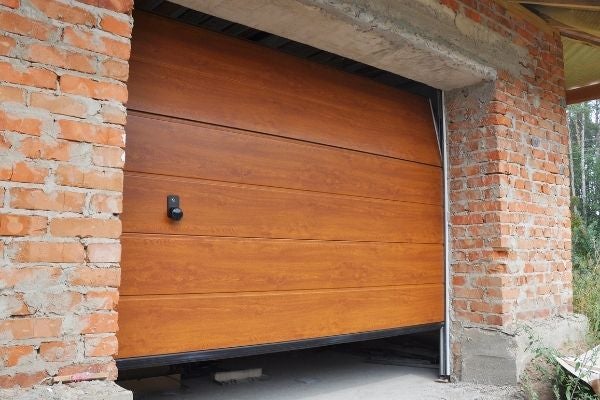
Garage doors serve many purposes. They secure our homes by locking out intruders, they keep animals out, and they create a protected space for our vehicles and other belongings by sheltering them from the weather. While just about any kind of a garage door can suffice, there are things that insulated garage doors do that go beyond protecting our homes and the possessions inside.
Here are some reasons to consider upgrading to an insulated garage door.
- Insulated Garage Doors Make Less Noise – Non-insulated lightweight doors often make the most noise. This can be an issue for people trying to sleep or work in rooms located directly over the garage or next to it. Insulated doors are heavier and the panels are made of tightly bonded materials, so they vibrate less when moving up or down along the track. They can also help to block more noise from the area surrounding your home.
- Insulated Garage Doors Last Longer – Since the panels are constructed from layered materials, they are stronger and more durable than non-insulated doors. Older style garage door panels are made by wrapping thin sheets of steel over the panel frames, which makes them essentially hollow. They can be easily dented or damaged when hit by a car, a bicycle, or even a basketball or football. A dented garage door takes away from your home’s curb appeal and value. With an insulated garage door, you can ensure the value of that garage door for years to come.
- Insulated Garage Doors Save You Money – An insulated garage door will hold more heat inside your garage and therefore, your home. This means that less heat is lost from your home through the garage and your furnace won’t have to work harder to compensate for it. Your insulated garage door will save you money on your heating bills each month.
- Insulated Garage Doors Protect Your Car – Cold weather affects cars in adverse ways, such as decreasing the air pressure in tires, thickening engine and brake fluids, and causing the battery to have a harder time starting the vehicle. An insulated door can raise the temperature inside the garage to about 42° F when the temperature outside is 20°F. Car batteries work best at temperatures between 30 and 90° F. Upgrading to an insulated garage door protects some of your biggest investments, your home and your vehicle.
Choosing the right insulated garage door for your home involves knowing which materials would provide the best value and style. An experienced garage door installation company like Thomas V. Giel Garage Doors, Inc., can show you the available options and help you make an excellent choice.
-
Preparing Your Garage Door for Winter
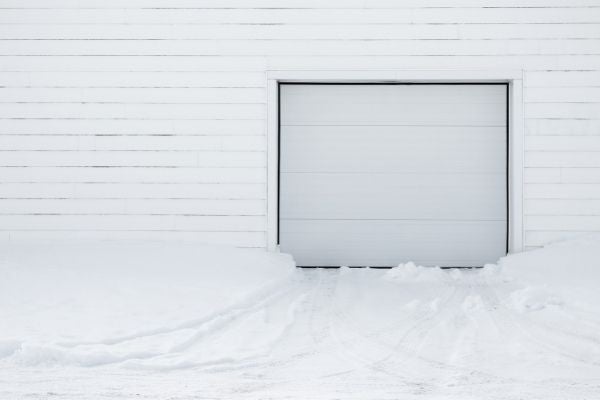
Four Tips for Getting Your Garage Door Ready for Winter
Wintertime can be a rough season for your garage door. Battering winds and freezing temperatures are examples of things that can damage this important segment of your home. Here are four ways to protect and reinforce your garage door before the temperatures start to drop.
Perform a Thorough Inspection
Look for any existing damage on your door and its tracks. Stand outside and open and close the door a few times. Is it producing any abnormal sounds like clanking or screeching? Observe how smoothly the door moves up and down and if it gets caught up on the tracks at any given time. For a more comprehensive assessment, consider bringing in a garage door maintenance and installation company, like Thomas V. Giel Garage Doors, Inc.
Grease Your Door’s Moving Mechanical Parts
This is a simple maintenance tip that you can do yourself without needing to hire a professional garage door technician. Purchase a quality lubricant solution, usually in spray form, and apply a fresh coat to any of the door’s moving components. These include the rollers, springs, and hinges.
Fully Seal Your Garage Doors
At nighttime, stand outside of your garage door and close it. Check the bottom of the door to see if there is any light seeping out from inside the garage. If so, the garage door does not fully seal. And although that doesn’t cause any structural damage, a garage door that isn’t fully sealed allows hot air to escape to the outside. You may need to call a garage door specialist to help you fix this issue.
Clean the Sensors
Modern garage doors typically come with safety sensors that keep them from closing on a person or object passing below them. This is especially important for households with children, pets, and elderly tenants. Dirt and debris can accumulate and cover or damage the sensors, preventing them from doing their job. Clean these regularly to protect yourself and your loved ones.
One of the easiest ways to prepare your garage door for the cold months is to schedule regular garage door maintenance at least once a year.
